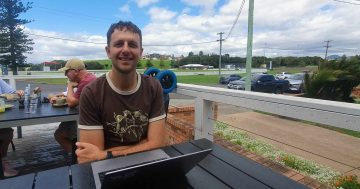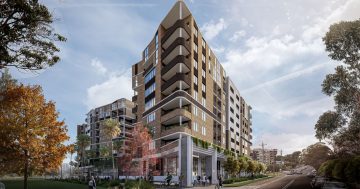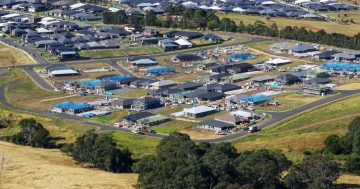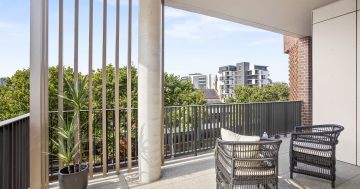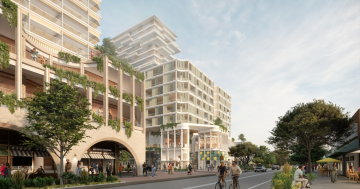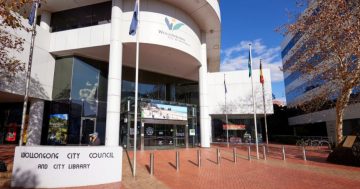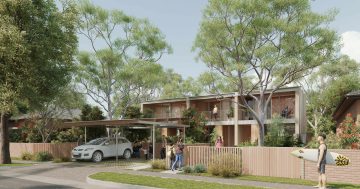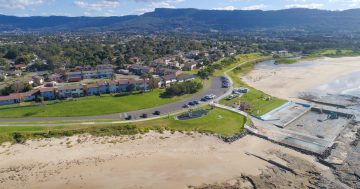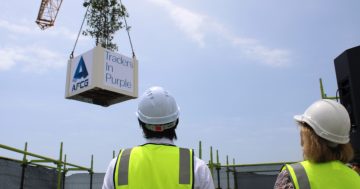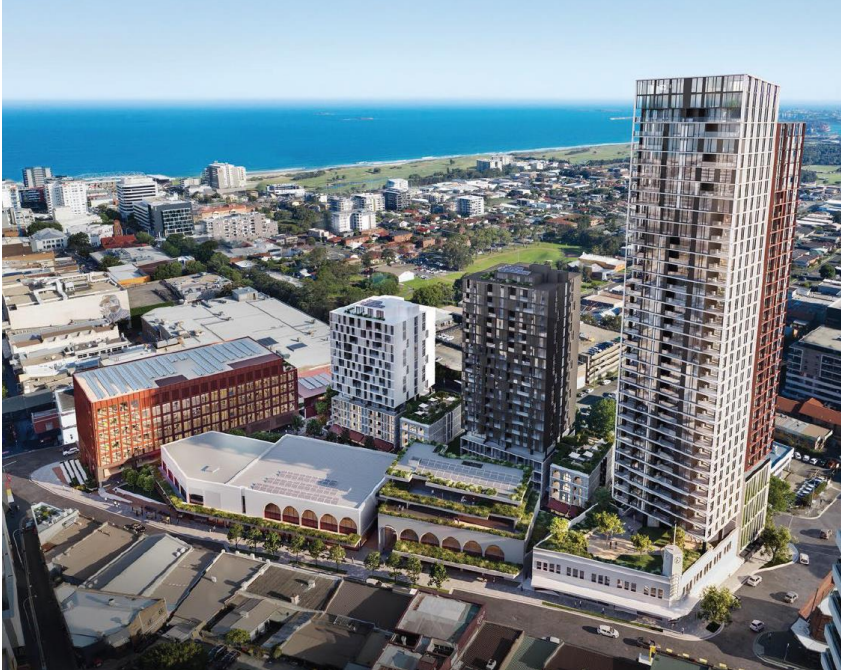
An artist’s rendition of the proposed $500m WIN Grand development – just one example of state significant developments with infill affordable housing. Photo: Gyde.
The NSW Government’s plan to deliver more affordable housing by allowing developers to sidestep local council objections has “not a hope in hell” of solving the housing crisis, retired Wollongong planner David Winterbottom says.
After a swathe of changes to planning policies over the past 18 months, the government announced late last year it would “remove unnecessary roadblocks to the delivery of more affordable homes in NSW with changes to the threshold for infill affordable housing projects being sent to the Independent Planning Commission (IPC)”.
The Infill Affordable Housing Bonus scheme was introduced in December 2023 and offers developers additional building height and floor space, if 10 per cent of the building is retained as affordable housing for at least 15 years.
As the scheme falls under a state significant development pathway, one objection from a local council automatically sends the project to the IPC, a reassessment process that can add up to nearly 130 days to the approval process.
“Affordable housing” is not housing stock available for purchase at a price median income earners can afford.
It’s rental stock, separate to social housing, available to very low- or moderate-income earners at a discount to the market rent for a comparable property in the area it is in, thanks to the support of housing organisations or the government.
There are strict eligibility criteria. The government hasn’t said what will happen in 10 to 15 years when the apartments built under the infill bonus scheme are no longer required to remain affordable.
There’s no question urgent action must be taken to combat homelessness, but Mr Winterbottom said changing the planning system wasn’t the solution.
“It’s scandalous a rich nation as us has the number of people on the streets we do,” Mr Winterbottom said.
“The state and federal government haven’t done anything about housing in two decades or more; now there’s a crisis and they blame the planning system – it’s ridiculous.
“The government has sold off public housing instead of building more; they haven’t invested in housing.
“The Federal Government hasn’t addressed the taxation system.
“In the centre of Wollongong, the vacancy rate is twice what it is in the rest of the city.
“That’s the negative gearing and people investing in housing in the hope that prices go up rather than buying homes to live in.
“There are quite a few things we could do to improve the delivery of housing in Wollongong, but you have to look at the whole.”
According to SQM Research, vacancy rates in the Wollongong region are 0.78 per cent, while in the CBD they sit at 1.3 per cent.
A NSW Government spokesperson said following the changes, projects would still be placed on public exhibition.
Communities and councils will be able to submit objections, and the proposals will be thoroughly assessed through a merit-based process.
“Infill affordable housing projects that are deemed highly contentious and those with a declared political donation will still be referred to the IPC and other existing thresholds still apply,” the spokesperson said.
“The projects that are already sitting with the IPC will continue through that process, however from today, no further infill affordable housing project will be referred to the IPC following an objection from a council.”
NSW Planning and Public Spaces Minister and Wollongong MP Paul Scully said he expected the move to take the controversy out of planning decisions around large housing developments.
“In an environment where we need to get more market homes and more affordable homes into our housing mix, I don’t believe these projects warrant referral and I don’t believe that the public is better served by having them referred,” he said.
Mr Winterbottom, who was formerly the director of planning at Wollongong City Council, disagreed.
He said cutting councils out of the decision-making process wouldn’t result in homes – or neighbourhoods – people wanted to live in.
Many high-density developments are built in ways that don’t match what people want from their homes or neighbourhoods.
“I have never seen anyone on a balcony in central Wollongong ever,” Mr Winterbottom said.
“Many people would prefer a little juliette balcony, and it would be cheaper.
“By the same token, they’re mandating a six-sqm open space for each dwelling, but you don’t have a pleasant area to meet other people who live in your building.
“The local community has been involved in preparing the local council’s plans and strategies about what kind of development we want and where.
“For the State Government to come in and override everything, with developments that aren’t liveable, that’s disastrous.”









